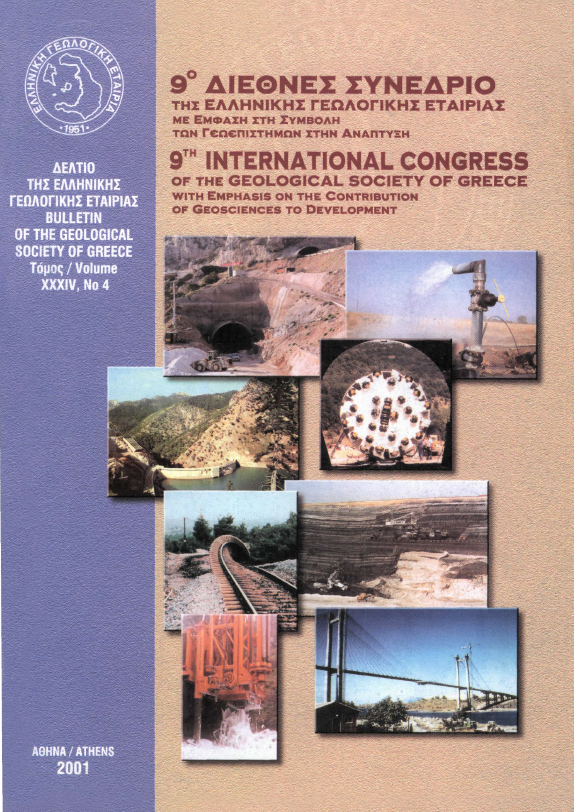THE CRITICAL EARTHQUAKE MODEL: OBSERVATIONS IN CRITICAL AREAS OF THE BROADER AEGEAN AREA
Abstract
The time variation of the cumulative Benioff strain, S, in several critical regions of past mainshocks which occurred in Greece and surrounding area has been examined, in an attempt to check the validity of the critical point concept. For this reason, data concerning the critical regions of twelve strong mainshocks, which have recently been defined by other scientists, have been used and intermediate-sized earthquakes which occurred before and after each mainshock were collected. It was found that the cumulative seismic crustal deformation released by these intermediate magnitude events was accelerating before all the mainshocks considered, whereas the deformation release rate during the respective postshock periods was, in general, lower than the preshock ones
Article Details
- How to Cite
-
Kourouzidis, M. C., Karakaisis, G. F., Papazachos, B. C., & Makropoulos, C. (2004). THE CRITICAL EARTHQUAKE MODEL: OBSERVATIONS IN CRITICAL AREAS OF THE BROADER AEGEAN AREA. Bulletin of the Geological Society of Greece, 36(3), 1432–1440. https://doi.org/10.12681/bgsg.16532
- Section
- Seismology

This work is licensed under a Creative Commons Attribution-NonCommercial 4.0 International License.
Authors who publish with this journal agree to the following terms:
Authors retain copyright and grant the journal right of first publication with the work simultaneously licensed under a Creative Commons Attribution Non-Commercial License that allows others to share the work with an acknowledgement of the work's authorship and initial publication in this journal.
Authors are able to enter into separate, additional contractual arrangements for the non-exclusive distribution of the journal's published version of the work (e.g. post it to an institutional repository or publish it in a book), with an acknowledgement of its initial publication in this journal. Authors are permitted and encouraged to post their work online (preferably in institutional repositories or on their website) prior to and during the submission process, as it can lead to productive exchanges, as well as earlier and greater citation of published work.





